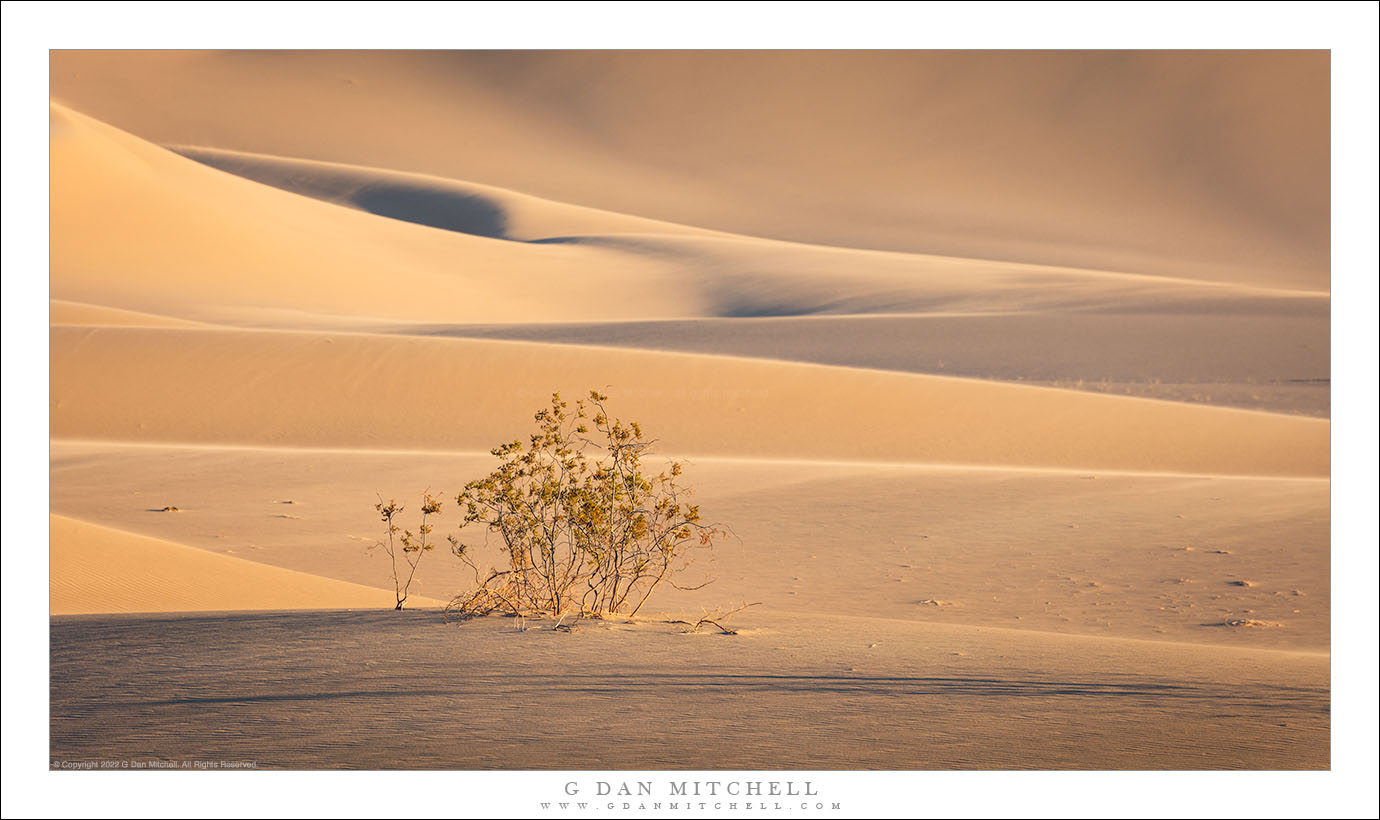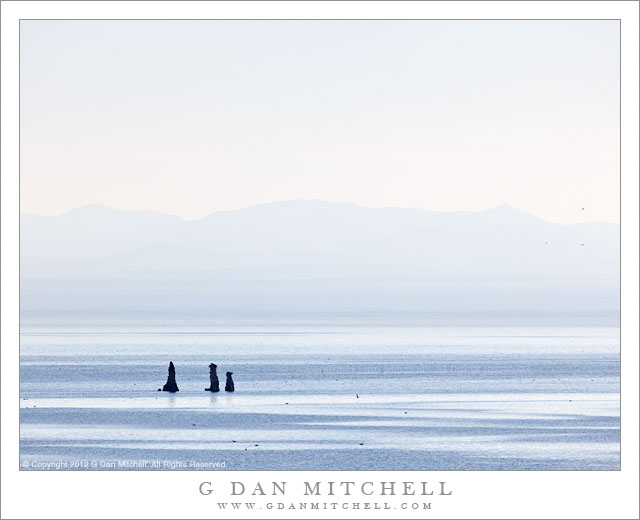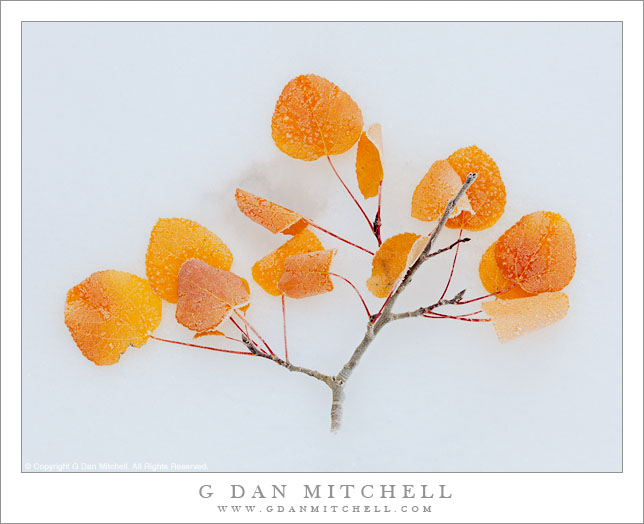
Creosote and Dunes, Evening Light. © Copyright 2022 G Dan Mitchell – all rights reserved.
Creosote plant in eveing light as wind-blown sand softens the contours of receding dunes.
This is (yet another!) photograph that demonstrates the conjunction of a range of things: planning, good luck, responding quickly to conditions, and more. Regarding the planning, I had made a long drive to a place a mile or so from this spot, where I set up a primitive camp and waited for the late-day light. A lot of good luck was involved — this was my first time at this location, so I had to make some guesses about where to be when the evening light arrived… and the guesses turned out pretty well.
As to conditions, several things were happening here. First, it was extremely windy, so I made some decisions about camera setup to deal with that. I made the exposure during a short interval of less wind. Second, there was only a brief interval when the light acquired the warm, evening color, and then the shadows from a low mountain range to the west “turned out the lights.” If you look closely you can already see some shadows starting to creep into the edges of the frame.
G Dan Mitchell is a California photographer and visual opportunist. His book, “California’s Fall Color: A Photographer’s Guide to Autumn in the Sierra” is available from Heyday Books, Amazon, and directly from G Dan Mitchell.
Blog | About | Flickr | Facebook | Email
Links to Articles, Sales and Licensing, my Sierra Nevada Fall Color book, Contact Information.
Scroll down to leave a comment or question. (Click this post’s title first if you are viewing on the home page.)
All media © Copyright G Dan Mitchell and others as indicated. Any use requires advance permission from G Dan Mitchell.



